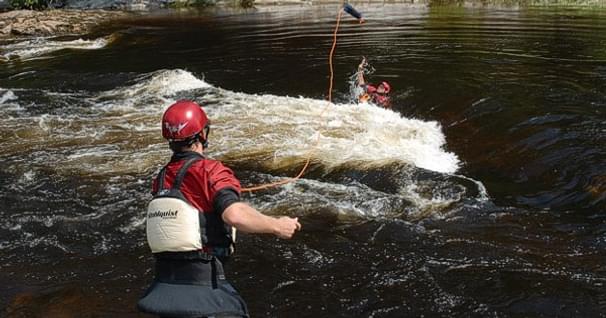How to Quickly Coil a Throw Rope
Running white water contains inherent risks, and every boater should learn to practice proper safety and rescue techniques.
The most versatile and efficient rescue tool that all paddlers should carry is a throw rope. In rescue situations where the first throw does not prove effective, it's important to be able to set up efficiently for the second throw. Time is an important factor in any water rescue.
Butterfly coils can be an effective method, but there's another alternative known as the TRU method, or the Thompson River University technique. The TRU Method provides a fast, simple way to get your second or third throw out without risk of your rope becoming tangled or bunched.
Simply take the end of the rope in your throwing hand to begin. With your palm facing out, and the rope pinched between your thumb and your palm, wrap the rope under your arm, outside your elbow, and over your wrist, in front of your forearm. Then, wrap the rope back around your hand, across your palm. Repeat as many times as necessary to form a figure 8 coil long enough to do your rescue. Now, just slip the bottom of your rope coil off your elbow, shake out your rope, and you're ready for a tangle-free second throw.
With practice, you'll be able to do this extremely fast. This can be done quickly and as many times as necessary to complete the rescue.
This is just one of many useful rescue techniques to help keep you and your paddling partners safe on the river. We highly recommend taking a swift water rescue course from a certified instructor.
50 years of lightweight, maneuverable, high-performing kayaks.
Check out this interview with Tom Keane, Eddyline Kayaks Co-Owner, on their journey!
Related Articles
Casting out a rescue throw line, either contained within a Throw Bag or gathered in coils requires…
One of the most critical, and versatile pieces of kayaking gear is a workable length of line. Most…
One of the lowest-risk and most effective techniques for reaching a victim is by use of a throw rope. In…
Picture yourself approaching a set of rapids, with only a faint out-of-the-way animal trail heading up a…



